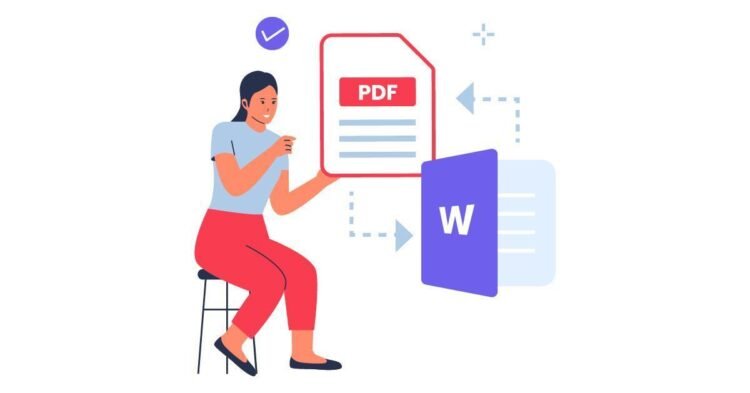PDF documents are growing in popularity and are one of the most widely used formats today. While it’s actually the most well-known word processor for formatting, even its users turn to PDF when they need to share certain documents, like handouts.
PDFs have proven useful for many professionals and companies and are also quite common among university students and professors who prefer to read on their tablets or phones. PDF files have found their way and are loved by everyone, from schools and colleges to small businesses and large enterprises to legal, medical, and real-estate industries.
However, when sharing and storing documents, we often encounter different file formats. The two most commonly used formats are PDF and Word documents.
Both formats have their own unique features and applications, but what is the difference between them, and when should you use one over the other? To understand this, we’ll take a closer look at the main differences between PDF and Word files.
PDF vs Word File: When to Use Each
- Created by different companies: The main difference between Word and PDF is that both the formats are created by different companies. Word is created by none other than Microsoft, whereas PDF is created by Adobe. As a result the two formats are completely different.
- Ease of Storage: Word files are very easy to save because of their easy editing capabilities. However, PDF offers limited capabilities when it comes to saving files. This is because PDF is designed for ease of viewing, not storage.
- File Size: Generally, Word files take up more space than PDF files. This is why if you want to send files over email, you will find PDF a better option. Since PDF files are not as large, you can send them more easily than Word files. Additionally, all email clients have size limits when sending files.
- File size reduction: A big advantage of PDF files is the option to reduce their size. You can easily compress high-quality files into smaller sizes.
- Aesthetics: If we compare Word and PDF in terms of aesthetics, PDF is a better option. PDF files are more attractive to look at and show up on all devices.
There are many differences between Word and PDF. Therefore, you should consider your needs when choosing the format of the documents and choose a format that suits your needs.
Since 2010, the MS Word software includes a Word to PDF Converter Tool that allows you to save your documents in PDF. Converting Word files to PDF has become very easy on any system and device.
But sometimes, the formatting gets changed. The solution is to save the Word document in its original format and convert that file to PDF using online converter tools.
With the help of Adobe Acrobat in Windows 10, Convert Word Documents to PDF
On your Windows 10 operating system, you can convert Word files to PDF using Adobe Acrobat online services. Just follow these easy steps:
- In your preferred Internet browser, open Adobe Acrobat Word to PDF Converter.

- Next, click ‘Select a file’ or drag and drop your Word document into the drop zone.
- Select the RTF, TXT, DOCX or DOC file you want to convert to PDF.
- Acrobat will then convert your file automatically.
- Sign in to download or share your new PDF.
Acrobat PDF Tools Because of its high quality, your Word content will appear exactly as you expect in the converted PDF file, and it will appear the same to everyone who views the file.
Convert Word to PDF in Windows 10 easily with the help of modern digital tools.
MS Word files can be useful in many of your digital works. However, you may need to convert these files to PDF in many circumstances. For such situations, we shared this blog with you.
We hope the information given here will be useful for you.























